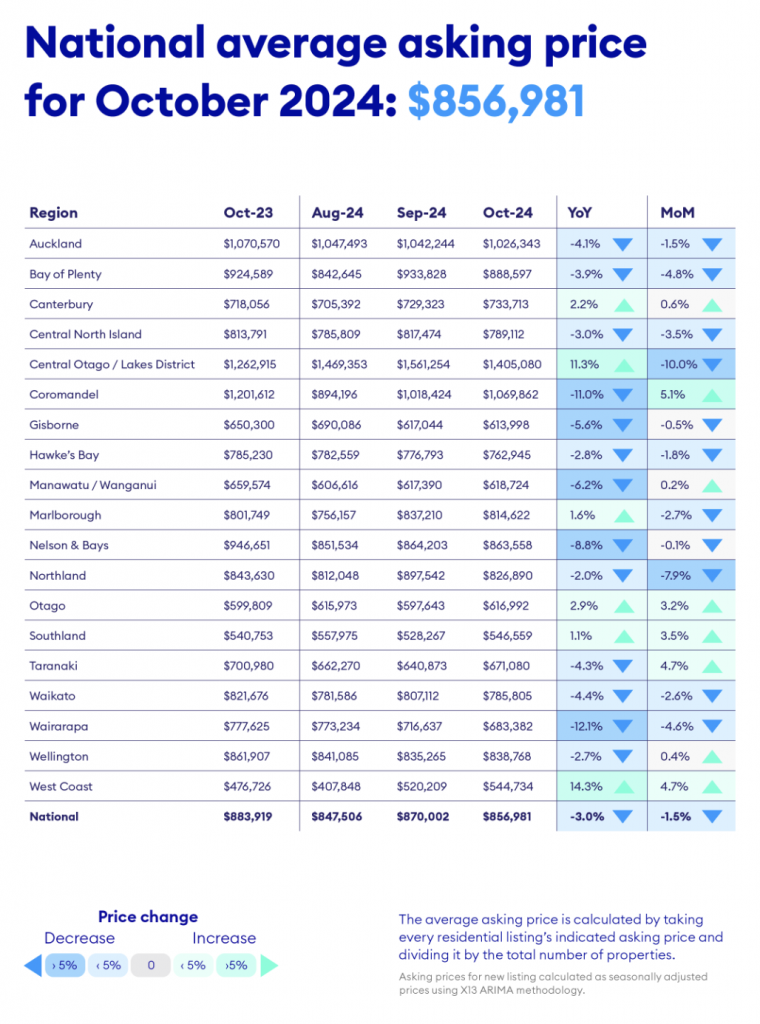OCR Cut and Easing Interest Rates Spark Renewed Interest in New Zealand’s Property Market
Following the recent OCR reduction and a gradual easing of interest rates, New Zealand’s property market is showing signs of renewed buyer interest. Buyer inquiries surged after last month’s OCR cut, signaling increased confidence among New Zealanders on the lookout for new homes. However, high stock levels reflect a cautious optimism as buyers weigh economic factors like job security and interest rates.
In October, property stock levels reached a decade high, with over 32,000 homes listed nationwide—a 26.3% increase year-on-year and a 7.7% rise from September. This stock level is the highest recorded for October since 2014–2015. While the seasonal increase in listings is typical during the spring selling season, the current levels offer a wider range of choices for buyers.

All regions reported positive stock growth both month-over-month and year-over-year, with many showing significant double-digit increases. Gisborne saw the largest annual growth in stock, up 81.2%, followed by Wellington at 52.9%. Only Northland, Taranaki, Nelson, and Southland experienced single-digit increases.
Signs of changing buyer behavior are also emerging, with properties moving off the market faster. Listings held for fewer than 30 days increased from 23.9% in September to 27.9% in October, suggesting interest is picking up even if sales haven’t surged yet. The current environment of high stock levels and stable prices is creating favorable conditions for ready buyers, providing rare predictability in a market that’s seen little price volatility over the past two years.
For 22 months, New Zealand’s national average asking price has held steady, fluctuating between $850,000 and $890,000. In October, the average asking price was $856,981, down 3.0% year-on-year and 1.5% from the previous month. Most regions saw price changes of less than 10% compared to 2023, signaling stability across the country.
However, a few regions recorded notable price fluctuations. Otago, Southland, and the West Coast experienced growth in asking prices both month-on-month and year-on-year, while Auckland, Bay of Plenty, Central North Island, Hawke’s Bay, Northland, Waikato, and Wairarapa saw declines in both. The West Coast led the price increases, up 14.3% from last year, whereas Wairarapa faced the largest decrease, down 12.1%. Both regions are smaller markets known for greater price volatility.
Let us help!
If you’re considering buying or selling a property and seeking to understand the current market conditions, why not chat with one of our friendly agents to understand how we can help?
Or feel free to click here to get your instant property estimate.

